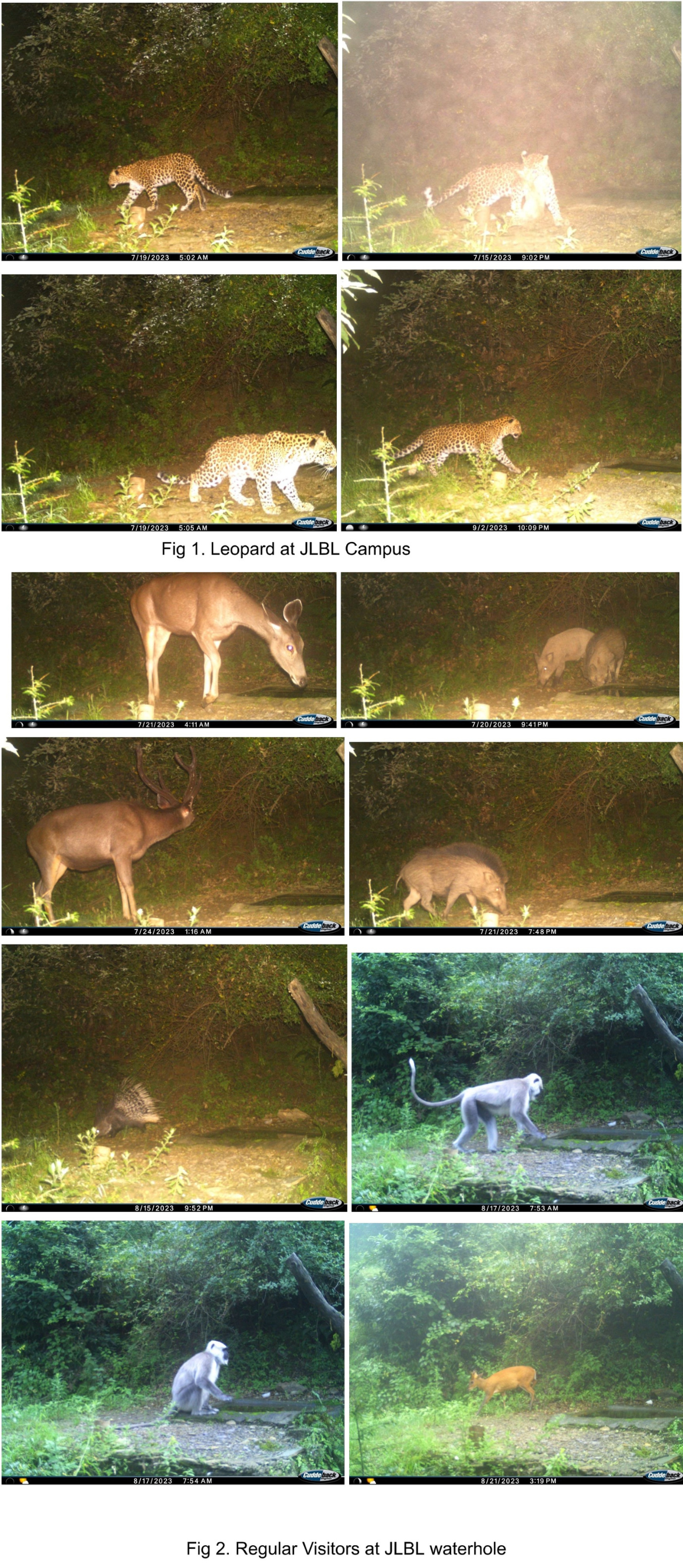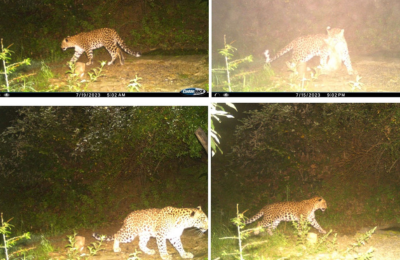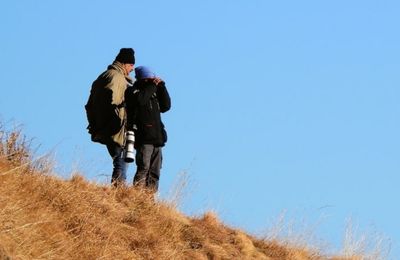(May 23, 2023 – September 5, 2023)
The camera trapping efforts conducted at Jungle Lore Birding Lodge in the Pangot region from May 23, 2023, to September 5, 2023, have yielded valuable insights into the diverse wildlife inhabiting this area. The data reveals a wide range of animal activity and highlights the significance of camera trapping in wildlife.
Key Observations
1. Diverse Wildlife
The camera trapping data underscores the rich biodiversity of the Pangot region. Several species of animals have been captured on camera, including wild boar, porcupine, barking deer, sambhar, and leopards.
2. Leopard Sightings:
- Leopards have been consistently observed throughout the monitoring period, indicating a stable presence in the area.
- Notable leopard sightings include June 15 and 19 2023, 1 individual.
- These findings highlight the importance of Pangot as a potential leopard habitat.
3. Other Wildlife
- Wild boar sightings were relatively common, with fluctuations in numbers over time.
- Porcupines, barking deer, Himalayan gray langur, and sambhar were also captured on camera, demonstrating the diverse array of herbivores in the region.
4. Predator-Prey Interactions:
- Predator-prey interactions refer to the dynamic encounters between species where one, the predator, hunts and consumes the other, the prey.
- leopards (predator) hunting langurs and barking deer (prey). For instance, when a leopard stalks and captures a langur or barking deer, it exemplifies a real-life illustration of these essential ecological interactions, showcasing the predator’s role in maintaining the balance of the ecosystem by controlling prey populations.
Importance of Camera Trapping in Wildlife Conservation:
Non-Invasive Monitoring: Camera trapping is a non-invasive method that allows researchers to observe and study wildlife without disturbing their natural behavior. This is crucial for obtaining accurate data on species’ presence and behavior.
Biodiversity Assessment: Camera traps help in conducting comprehensive biodiversity assessments. They provide data on both common and elusive species, contributing to a better understanding of ecosystem health.
Population Estimation: By capturing images of individual animals, camera trapping aids in estimating population sizes, which is essential for conservation planning and management.
Habitat Assessment: Camera trapping data can help identify key habitats and migration corridors for various species, aiding in habitat protection and preservation efforts.
Conservation Prioritization: The presence of leopards in the Pangot region highlights the area’s importance for leopard conservation. Such data can inform the prioritization of conservation efforts and the establishment of protected areas.
Community Engagement: Sharing camera trapping results with local communities can foster a sense of ownership and awareness, leading to increased support for wildlife conservation.
Conclusion:
The camera trapping efforts in the Pangot region have provided a wealth of information about the local wildlife, with a particular focus on the presence of leopards. This data underscores the importance of continued monitoring and conservation efforts in the area to protect the diverse flora and fauna that call Pangot home. Camera trapping, as a non-invasive and informative technique plays a vital role in achieving this goal and contributes to the broader field of wildlife conservation.
As we move forward, it is essential to expand these offorts, involve local communities, and collaborate with conservation organizations to ensure the long-terms preservation of this remarkable ecosystem

Report By – Jagjeewan S. Dhami




